Anime Review: Kotonoha no Niwa
Aug 18, 2013
Stunningly beautiful story of two lonely people.
Originally posted Aug 18. Updated Aug 21
A faint clap of thunder,
Clouded skies,
Perhaps rain comes,
If so, will you stay with me?
The above quote is a Japanese poem from the Manyoshu, which is a 8th century collection of over 4,500 Japanese poems. It is identified as a tanka and kind of like its more famous cousin the haiku, it is set in syllables, 5-7-7-7. This one in particular is a dialogue poem numbered [XI:2513-4]. It is featured prominently in the movie and along with the weather plays a crucial role in the plot of a beautiful, utterly beautiful movie called Kotonoha no Niwa (Garden of Words). This is a movie worth watching not for what it says, but for what it shows. There is something fleetingly, hauntingly beautiful in its scenery and imagery that is tough to put your finger on until long after the end credits have passed. I really enjoyed this particular movie and would highly recommend it to anyone who has an appreciation for what it means to be isolated and lost in a sometimes alien, fast-moving world.
In this review, I want to spend some of our time (both yours and mine) thinking about what this movie is trying to say to us and how what we learn from it can enrich our lives as a whole.
Art & Animation
Kotonoha no Niwa does amazing things with the rain. It is hard to describe. It is not photorealistic in that the animators simply went ahead and took images of real rain and drew over it. Yet at the same time, it is not quite the rain that you see in any sort of anime. There is a sort of sheen over it that is half animation, half real but stays out of the uncanny valley. Does that make sense? No, right? Then you just have to see it to get a sense of what I mean.
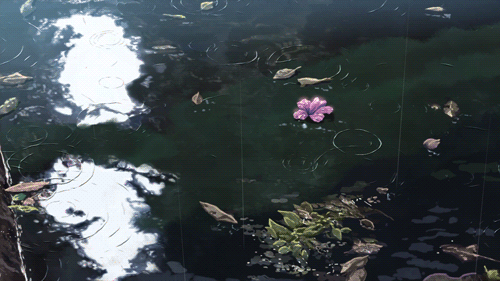
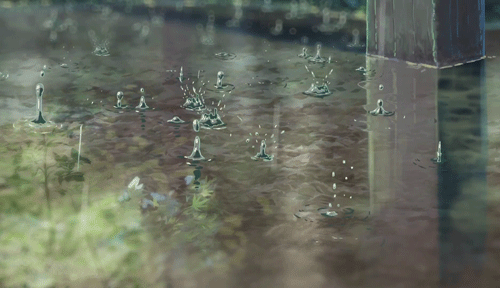
One more for good measure. This one is one of my favorites.
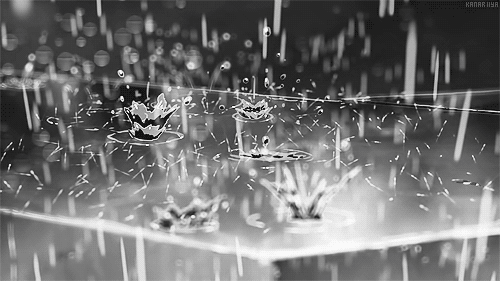
If there is one word to describe the look and feel of this entire movie, it is “beauty”. This flick is seriously good looking. It has this dream-like feeling to the whole thing. With such a style, there is the temptation to go too far and make the viewer fall into a stupor. However Kotonoha avoids this. The colors and quality are just too rich. When you look at this, there is instead the atmosphere of timelessness.
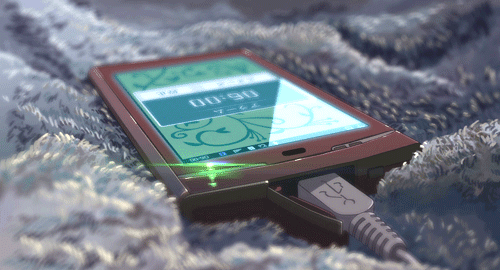
Craft seems to have been applied to even the most mundane and un-artistic things. A cellphone for example. It is perhaps the most troublesome of items. Looking at it not only reminds you of just how the interconnected the world has become, but also how it isolates people from each other. It is an item many people are intimately familiar with. They know every nook and crevice of their cell phone. And it is an item that at first glance is not really fit for stylizing. It is a metal and plastic box with a screen on it. What is there to animate? It is just there all the time, buzzing and beeping to bring plot details to the characters. But one thing I really noticed and enjoyed in Kotonoha is how they managed to make even the main character’s cell phone glow and symbolically resonate with all of the character’s hopes, fears, and dreams. It becomes a lot more than just a simple exposition machine. It says something without any lines. It looks as lovingly and lushly animated as any supporting character in the movie.
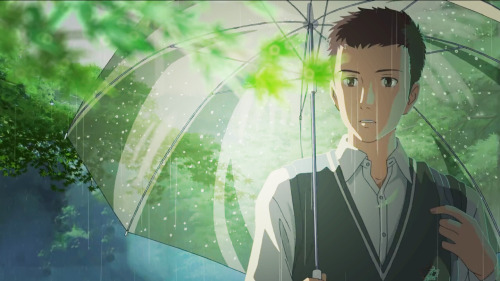
The human characters also sort of glow. It is definitely not human-realistic and seems to be a stylistic choice by the director and the animators. If you look at the main female character, Yukino, you can get a sense of why these choices work. For example, take how her hair has been rendered. It is almost simplistic in the brevity of the strokes. No flowing strands. No hundreds of dark and darker shades for shadows. In fact the color is almost flat and uniform.
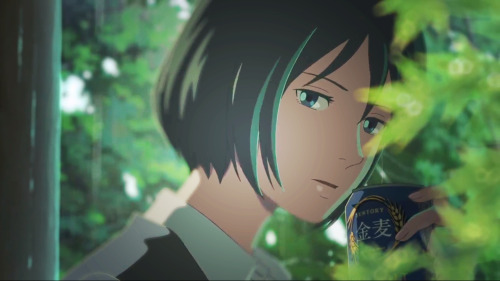
There, that is the word: Flat. There is a flatness in how the human characters look, and because the actual colors they did allow you to see are so jarring and unique you cannot help but find it beautiful. I have never seen color interplay of greens (greens so delicious it feels like that I have died and gone to heaven), peaches, and blues like this ever before. Who ever thought that it could possibly work to shade a green in the shadows of a person’s hair? It is just crazy!
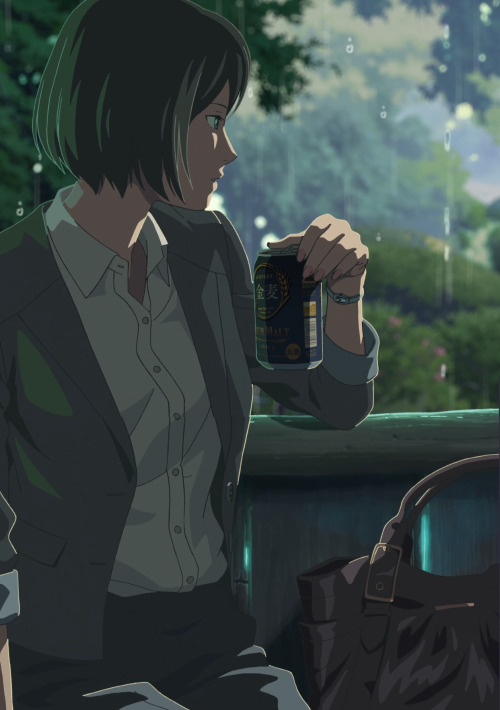
Yet it works. Every tiny bit of it. Kotonoha is something you want to see on a very good television panel. Character designer Tsuchiya Kenichi did a fantastic job and I hope to see some of his other work in the future.
Sound
There is not a lot of music in the movie but whenever it does appear it is used very well. The piano pieces sync well with whatever is happening on the screen. I did find at some times that it would go ahead and get a bit off track. However it speeds up at tense moments and recedes whenever you simply need the silence.
The sound is detailed and rich. I feel like they went out for hours and hours collecting sound samples of rain hitting different items. I am not a sort of sound snob but I noted that the rain has its own particular theme depending on the mood. There are times when the rain is gentle, pleasing but other times when it is angry. It is almost like expressing its own character feelings throughout the movie. Tiny touches like that really help establish the atmosphere without the use of blunt expository dialogue.
About the dialogue, the voice acting is pretty good but is not without its flaws. The guy is nothing much to write home about. I feel like his voice sounded the whole time a little too breathy for my tastes. I am kind of aware that this is how many people talk and I guess I could accept it but I just found it distracting from the actual words that he was saying. He is a very experienced VA with work in Tsubasa Chronicle and Bungaku Shoujo (where incidentally he also starred with Kana Hanazawa). Speaking of Kana Hanazawa, her voice is so distinct and unique that hearing it come out of this older woman’s lips is definitely distracting. It is one thing that jars you out of the plot. She does her best to match it to the older, more mature look but I am not sure that she succeeds. It might have made more sense to have someone more experienced like Ayako Kawasumi or even the ever-present Maaya Sakamoto do this particular role.
That being said about the roles, they are not the main instruments through which the director expresses his intentions. The VAs do not say much, because what they say is pretty simple and the scenery and imagery does so much for them already.
Story and Character
The story is pretty simple, which makes sense since this is only a 45 minute flick. I enjoy the fact that it is not meant to be something deep and twisting. This is a simple story told, and in some ways that can be really hard. You have to be ruthless in what needs to go and what needs to stay. You have to stay out of cliche but at the same time deliver what the viewer might already expect from the storyline. I am glad that they did a good job.
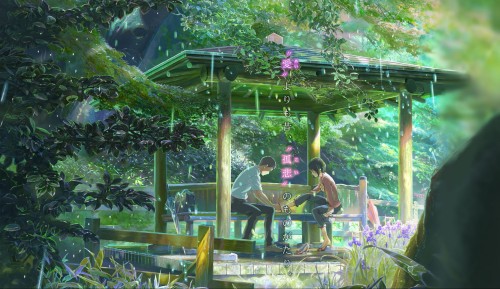
There are strong themes held including the weather and the aforementioned tanka that matter to the story and help enrich the experience. Even though the story is very short and simple in that it can be summarized in a single line, there are tiny rich details that justify you going back and seeing it again and finding those last details.
It seems to be a rolling theme in Japanese media (of all types) that endings should not be definite. This is something that is very different from western media. I was reading a Japanese detective mystery in which they track down a woman from her mysterious disappearance. The main characters hear nothing but stories about her for 400 pages but then finally track her down. The author chose to end the book at the second the protagonists finally touches her shoulder and she turns around to look at them. What an infuriating ending that was! It is much the same with Kotonoha. There are details that many viewers would want and almost demand to know. The ending! Did it end the way I wanted it to!? Tell me! But I think that is not the purpose of this particular style of telling a story. I do not want to sound like a university commencement speech giver but it is not about the ending it is about the journey. The story is told in how the seasons move, how the two main characters gaze and not gaze at each other, and how they reveal tiny bits of themselves as they slowly bind themselves to each other for safety in a cruel, uncaring world.
Another theme - and one that I never get enough of - is that of loneliness and feeling “stuck” in life. There is a certain isolation in this particular storyline. The main characters are lost. The real world is all around them, with people going about their existences and moving forward to whatever they have set out for themselves to achieve. In public, all you see are people’s best faces and for many people, they show only their own happiness. Surrounded by so much happiness (sometimes called the Facebook effect), for the people who have their own internal demons - who consider themselves frozen in a moment of time waiting for something (or someone) they want - it takes them down a dark, cold path. And for those people the only way they know how to find the peace and health they crave for themselves is to run away from it all. To run away from their societal duties. Their work duties. Their school duties. To wrap themselves off in their own little world. This is a story about two such people and I am not going to lie, I sympathize so hard that I am an automatic sucker for these stories. I cannot get enough of this bittersweet story.
Value and Enjoyment
Even when no thunder sounds
And no rain falls, if you but ask me,
Then I will stay beside you
I loved this short novella of a movie. You can take screencaps as desktop backgrounds and fill entire televisions with scenes from this movie. The story is sparse but beautiful. I enjoyed the imagery and not only just how beautiful the scenery looks (it makes me want to go see the actual gardens the movie takes its scenery from) but the people too. This is a great movie and I highly recommend it to anyone whether or not they consider themselves anime fans.
Share